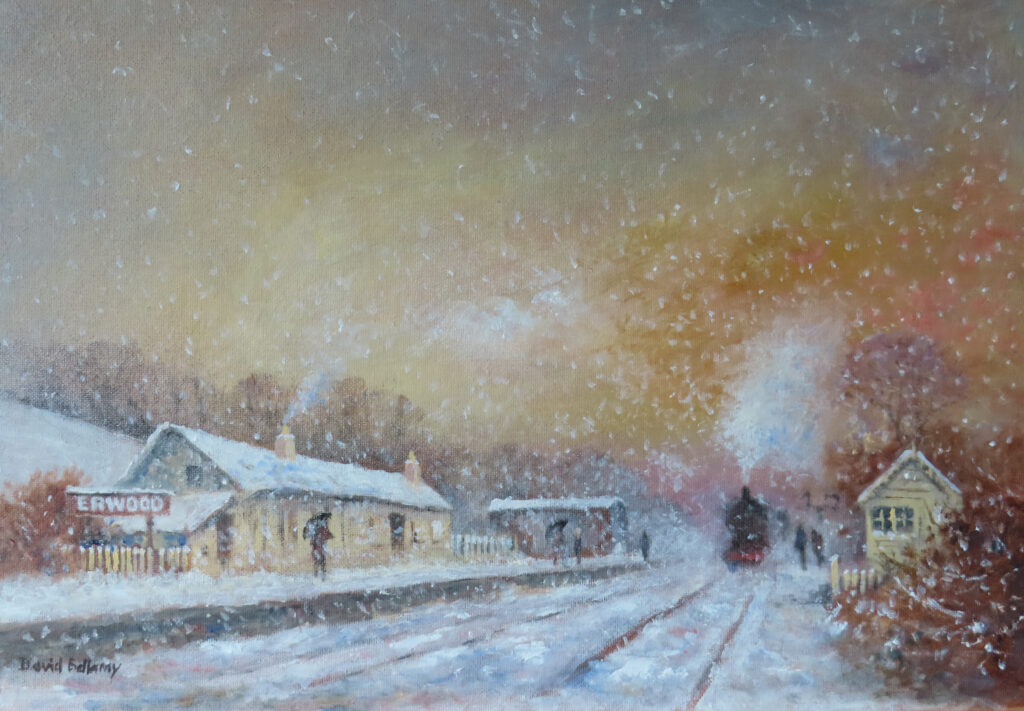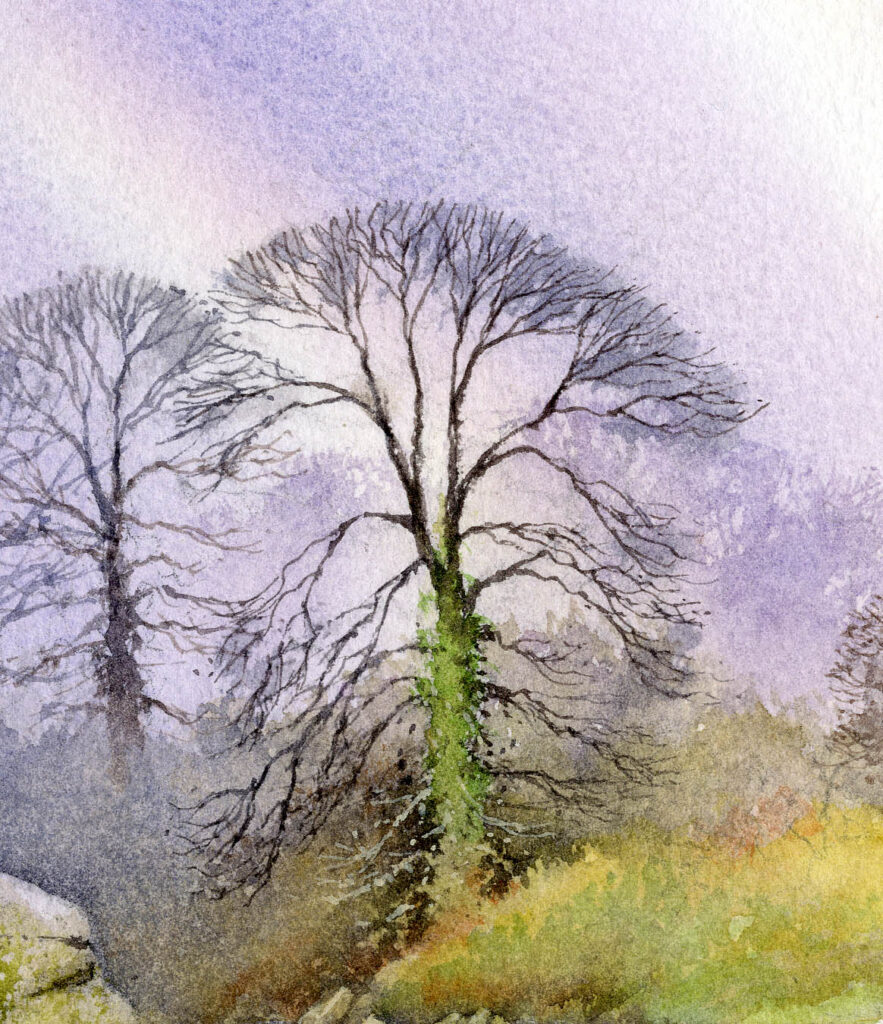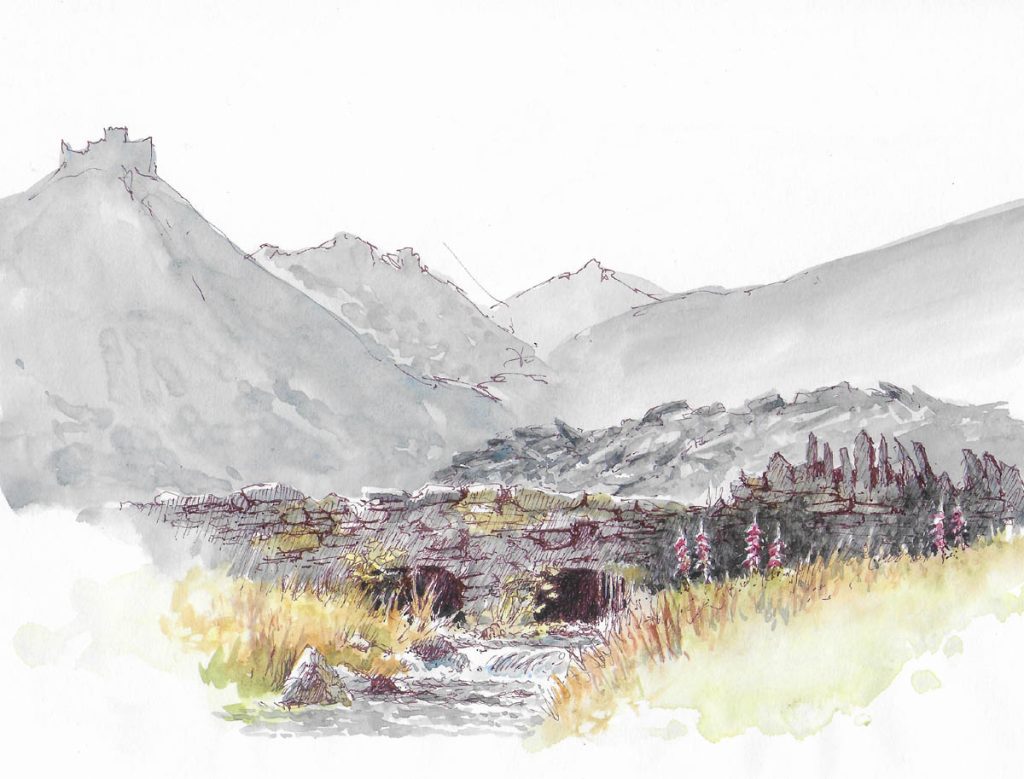DAVID BELLAMY: SNOW SCENES IN THE MANNER OF THE IMPRESSIONISTS
It’s been an all-action autumn with sketching adventures in the Peak District, Lake District, wildest Sussex and last week a fabulous winter day high up on the Brecon Beacons in icy conditions, so there’s been little time for blogging. I’ll try to fit in a blog post on the Lake District fun and games when I can, and also the episode in Sussex where I hadn’t realised such wild landscapes existed.
The January issue of Leisure Painter (which is on sale now) features my article on painting snow scenery using methods practiced by the French Impressionists, and for this I have reverted to painting in oils. Monet, Sisley and Pissarro were the main ones who worked on snowbound landscapes, and as Monet enjoyed painting trains I painted a reconstruction of a scene at Erwood Station in the 1960s.

This shows the 4.10 train from Brecon approaching Erwood Station in falling snow, the atmosphere of steam, snow and smoke making many of the images delightfully blurred as in a Monet painting. I declined to make the railway lines more distinct and detailed as Monet would render these with a few swipes of the brush. Where the snow lay deep on the ground I introduced not just blues and greys, but pinks, ochres and even orange, each of which suggested a vibrancy and spontaneity in a manner loved by the Impressionists. Larger blobs of flake white – a white favoured by Monet as it dried rapidly – I applied with a painting knife, then brushed part of the edges of the heavy impasto to blend in the lower parts.
You can see a more detailed description, with further examples of the techniques of Pissarro and Sisley in the current Leisure Painter magazine. I’m really enjoying going back to oil painting at the moment. These ‘Impressionist’ paintings, along with many watercolours, are on display at Erwood Station at the moment. The centre is well signposted off the A470 just north of Erwood Village in Powys, a great place for tea and cakes and a warm welcome. Telephone 01982 560555 open Tuesday to Sunday in winter.
My Watercolour and Beyond book shows a few examples of rendering snow and ice using methods such as glazing, watercolour ground, tissue paper, brushing white gouache over darker washes to create textured snow-cover, and cling film for patches of ice. Many of these techniques are quite different from my normal way of working and are not just effective, but great fun to try! Experimenting and bringing a sense of exciting anticipation into your paintings can be quite inspirational – go for it!




